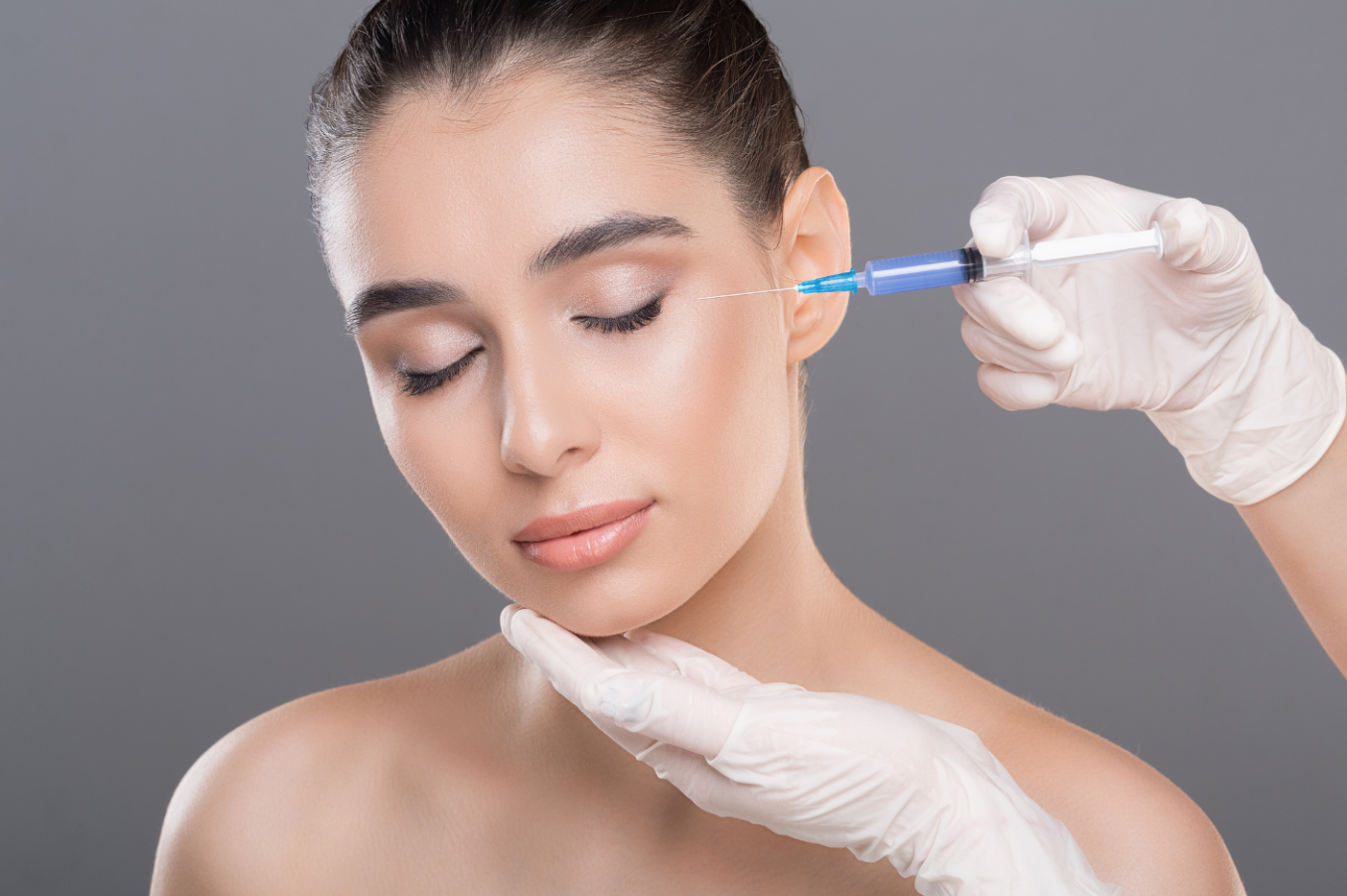
The Effect of Hyaluronic Acid Injections on the Temples
Role and Importance of the Temples
The temples play a significant role in the perceived size of the head when viewed from the front. A larger and rounder head gives a youthful impression. Babies typically have larger, rounder heads, right?
As we age, the bone structure in the temple area begins to shrink, and the indentation becomes more pronounced. This can make a person appear older.
Additionally, as the volume in the temples decreases, the skin around the upper eyelids begins to sag. The hollows in the temples can contribute to the appearance of sagging eyelids.
The Effect of Hyaluronic Acid
Hyaluronic acid mainly helps restore lost volume. It compensates for volume lost due to aging or even congenital lack of volume.
In addition to this, by adding volume to the temples, the upper eyelids can be lifted, improving sagging in that area.
Consultation Before the Procedure
During the consultation, we will decide which filler and how much will be injected.
There are generally two main methods for injecting into the temples:
Gunshot Method
Layer 4 Method
The Gunshot Method involves injecting a firmer filler just above the periosteum (bone membrane) using a needle into the deeper layers. The goal is to provide a smooth and natural result, with the volume not being overly pronounced. It also helps to reinforce the bone structure and has a high lifting effect for sagging.
The Layer 4 Method involves injecting a softer filler into the fourth layer from the surface of the skin. This method is great for creating a fuller appearance and is more effective for volume increase.
Injection Flow and Procedure
Basic Flow of Injection
I generally perform the Gunshot Method first to provide structural support, followed by the Layer 4 Method to inject where additional volume is needed.
For the Gunshot Method, I use a 27-gauge needle, adjusting the length depending on the injection site, especially in the lower areas where the bone is deeper.
For the Layer 4 Method, I use a cannula, as it is considered safer with fewer blood vessels, although I choose a thicker cannula to reduce the risk of embolism. A 21-gauge cannula is typically used.
Types of Hyaluronic Acid and Their Characteristics
For the Gunshot Method, I use firmer fillers like Voluma, Volux, or RHA4 to provide a strong height and volume.
For the Layer 4 Method, I use softer fillers like Volbella or RHA1 to ensure a smooth, non-bulging result.
Procedure Time and Aftercare
The Gunshot Method takes about a minute.
However, the time may feel longer due to the need to check for backflow of blood during the injection.
The Layer 4 Method typically takes 3 to 5 minutes as it involves a single insertion point and multiple areas to be injected.
Once the bleeding is stopped, you can resume normal activities. However, avoid lying on your side, as this could distort the hyaluronic acid shape. If this happens, you may need to return for adjustments.
Cost of Hyaluronic Acid Injections and Options
How Many cc or Vials Should Be Injected?
Generally, for firmer fillers like Voluma, Volux, or RHA4, one vial is sufficient. You may need 2 to 3 vials of softer fillers like Volbella or RHA1 for added volume. The specific choice is best discussed during the consultation.
What the Cost Covers
The cost of the procedure includes the filler, consultation, needles, disinfection, design, and facility fees. The only additional cost is for anesthesia if you opt for something like nitrous oxide.
Benefits and Drawbacks of Hyaluronic Acid Injections
Benefits
A round head creates an impression of youthfulness and vitality.
Risks
The main risks of hyaluronic acid injections include "allergies," "infection," and "blood flow issues," which apply even when injecting into the temples.
If an allergic reaction occurs, we may treat it with antihistamines. If it doesn’t improve, hyaluronidase can be used to dissolve the filler.
If an infection occurs, we treat it with antibiotics, and if it persists, the filler can be dissolved.
If a blood flow issue is suspected, the filler should be dissolved immediately.
Examples of Complications or Side Effects
When injecting with the Layer 4 Method, if the injection is too shallow, it may cause unevenness. In this case, massaging to blend or dissolving the filler might be necessary.
Also, significant bruising can occur, which may last for around two weeks.
Post-Treatment Care
Things to Watch for After the Procedure
Some people may experience headaches, but this typically resolves within a few days. Pain relievers can help alleviate discomfort. There are generally no other concerns.
Try not to overthink it.
How to Reduce Bruising and Swelling
It’s helpful to apply cold before the procedure and avoid applying too much pressure during the injection.
Follow-Up Care
The needle insertion may cause a brief sting.
Since the hyaluronic acid already contains a local anesthetic, the pain during injection is usually minimal, although you may feel something entering your skin.
Anesthesia Types and Their Effects
We offer nitrous oxide (laughing gas), numbing cream, and numbing tape.
Nitrous oxide gives a light, relaxed feeling, reducing anxiety during the procedure, though it doesn’t completely numb the pain.
Numbing cream and tape work by dulling the sensation on the surface of the skin, providing some pain relief. Typically, numbing tape is used near mucous membranes like the eyes or mouth, while the cream is used elsewhere.
Ways to Reduce Pain
Cold applications before the procedure can help with pain relief. Cooling before injection can make the procedure more comfortable.
Yoshiko Kuno
